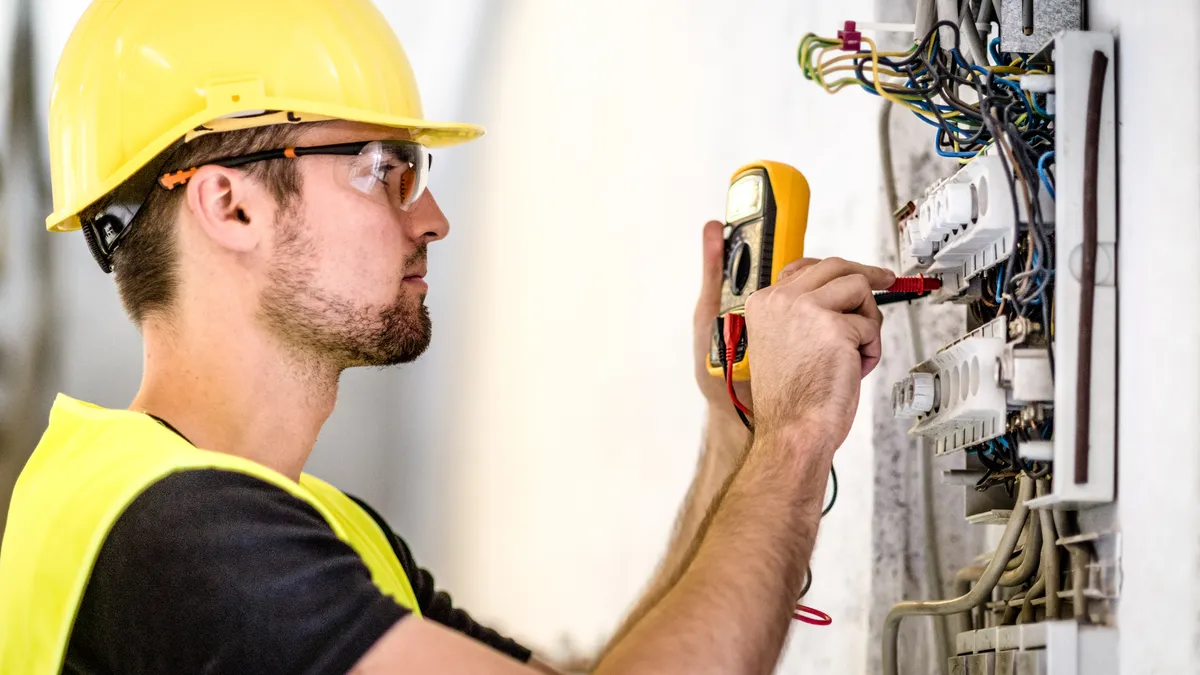Luiza Mills is vice president of human resources at Interstate Electrical Services in North Billerica, Massachusetts. Opinions are the author's own.
"Good jobs at good wages" is not just a political slogan. The electrical industry is making good on this ambitious promise today. Solid careers with promising, sky-is-the-limit futures for smart, hardworking professionals are available right now, no costly college degree required.
Given this, how do we explain the chronic shortage of skilled electricians and other tradespeople? More importantly, how do we address this shortage, both for the benefit of our businesses and the economy at large?
One reason for the shortage of licensed electricians is demand. Employment of electricians is projected to grow 8% from 2019 to 2029, much faster than the average for all occupations, according to the U.S. Bureau of Labor Statistics. Other professional trades are also expected to grow, but not as dramatically.
Another reason is attrition. About 82,200 openings for electricians are projected each year, on average, through 2029. As the commercial electrical workforce ages and retires, new electricians are not keeping up with the pace. Plumbers, HVAC specialists and other MEP trades are experiencing similar challenges.
Given all this, here are four steps we can take to tackle the skilled trade employment shortage:
Boosting awareness: The electrical trade offers a challenging, rewarding, debt-free career, particularly with higher education debt exceeding $1.5 billion in the US. Still, a "perception gap" needs to be overcome. While the trades have evolved and modernized, public perception of them has not. It's up to all of us to spread the word in both professional and personal interactions that the trades are a smart and viable option.
Working with schools: Focusing on community and youth outreach is key. We make visiting middle schools, high schools and vocational tech schools a top priority, working to expose young people to all facets of the modern electrical trade. We've found the students are fascinated with the various facets of the trade, spanning from a traditional electrician role, to 4D modeling, to advanced design software.
Offering apprenticeships: Internship and co-op programs allow students to work on site to see how their interests line up with the industry today. Offering opportunities to work in every department, ranging from finance to software detailing gives interns and students a view into the broad range of positions available in the trades. Apprenticeships offer pay and benefits, along with school/tuition assistance and invaluable on-the-job training.
Embracing diversity: While the electrical trade may have been traditionally overwhelmingly white and male, today we have a much more diverse workforce taking shape that increasingly includes women. An important development that is changing the playing field for electricians is the adoption of lean manufacturing methods and the increasing use of prefabrication.
Use of prefabricated assemblies delivered to the point of installation reduces physical wear and tear, enabling licensed electricians in the field to use their skills and experience to solve complex, real-world problems with designers, engineers and detailers, not lugging cable and wiring boxes.
Recruiting the next generation of electricians and tradespeople demands a proactive approach to engaging students and local communities with a positive message about our industries and the variety of career possibilities they offer. It's time more people know one of the best-kept secrets in the job world today: The professional trades offer an exciting, fulfilling path forward.













